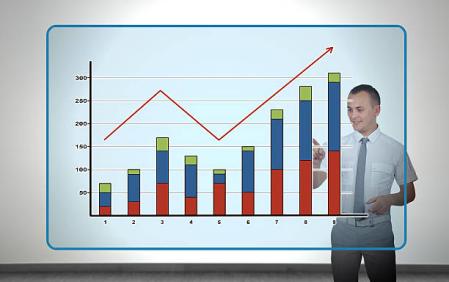Understanding the Gordon Growth Model (GGM): An In-depth Analysis
Jan 10, 2024 By Susan Kelly
The Gordon Growth Model (GGM), also recognized as the Dividend Discount Model (DDM), is a fundamental analysis methodology utilized extensively in finance and stock valuation. Conceptualized by Prof. Myron Gordon, this model provides a straightforward approach to evaluate the intrinsic value of a company's stock based on a future series of dividends that grow at a constant rate. It assumes that a company's dividends are its primary source of value to its shareholders and, therefore, forms the basis of the stock valuation. This model is particularly useful for companies with stable growth rates such as utilities and blue-chip firms. In the following sections, we will delve deeper into the mechanics and application of the GGM, exploring its real-world implications and limitations.
Understanding the Gordon Growth Model

The Gordon Growth Model (GGM) is a dividend discount model that calculates the intrinsic value of a stock by estimating its expected future dividends. It follows the premise that the present value of a stock is determined by its future cash flows, namely dividends, and as such, can be calculated by forecasting these cash flows and applying an appropriate discount rate.
Mechanics of the Model
The GGM formula is as follows:
P = D1 /(r-g)
Where,
- P represents the intrinsic value of the stock
- D1 stands for expected dividend for the next period
- r represents the required rate of return, and
- g signifies the constant growth rate of dividends.
In simpler terms, this formula suggests that the intrinsic value of a stock is equal to its expected dividend divided by the difference between the required rate of return and the growth rate. This means that as long as the required rate of return is higher than the growth rate, there will be a finite positive intrinsic value for a stock.
Applications of the Gordon Growth Model
The GGM has various real-world applications, including but not limited to:
- Valuation of stable companies: The GGM is particularly useful for valuing stocks of companies with stable and predictable growth rates. This includes mature businesses in established industries such as utilities, consumer staples, and blue-chip firms.
- Estimating returns on investments: Investors can use the GGM to estimate the expected return on their investment in a particular stock, based on its intrinsic value and the current market price.
- Comparison of investment opportunities: By comparing the intrinsic values calculated using the GGM for different stocks, investors can make informed decisions about which stocks offer better investment opportunities.
How the GGM is used in the finance industry?
The GGM is widely utilized in the finance industry for stock valuation, investment analysis and decision-making. Some common applications of the GGM in the finance industry include:
- Investment Banking: Investment bankers use the GGM to determine a fair price for a company's stock during an initial public offering (IPO) or when selling shares to investors.
- Equity Research: Equity analysts use the GGM to recommend buy, sell or hold actions on a stock based on its intrinsic value and current market price.
- Portfolio Management: Portfolio managers use the GGM to determine which stocks to include in their portfolios, based on their expected returns and risk profiles.
Limitations of the Gordon Growth Model
While the Gordon Growth Model has several advantages, it also has its limitations. Some of the key constraints of this model include:
- Assumption of constant growth rate: The GGM assumes that dividends will grow at a constant rate indefinitely. In reality, companies' growth rates may vary significantly due to changing market conditions and business cycles.
- Sensitivity to variations in the required rate of return: Small changes in the required rate of return can significantly impact the estimated intrinsic value of a stock.
- Applicability to certain industries only: The GGM is most suitable for mature, stable companies and may not be applicable to fast-growing or cyclical businesses with unpredictable cash flows.
Real-world examples of GGM application

The GGM has been used extensively in the finance industry, with several notable examples being:
- General Electric (GE): In 2015, analysts at JPMorgan applied the GGM to value GE's stock and recommended a buy rating based on their calculated intrinsic value.
- Coca-Cola: In 1998, Warren Buffett used the GGM to estimate the intrinsic value of Coca-Cola's stock and purchased a significant stake in the company.
- Tesla: In 2019, analysts at Morgan Stanley applied the GGM to value Tesla's stock and concluded that it was overvalued based on its current market price.
Future trends and implications related to the GGM
As the finance industry continues to evolve, there may be several future trends and implications related to the GGM. Some of these could include:
- Incorporation of multiple growth rates: Analysts might start considering different growth rates for dividends over time instead of assuming a constant rate, resulting in more accurate valuations.
- Use of alternative valuation models: With the rise of new valuation methods and techniques, there could be an increased use of other models alongside or instead of the GGM.
- Integration of technology: Advancements in technology may lead to more sophisticated tools for stock valuation, potentially making the manual calculations involved in using the GGM obsolete.
Conclusion
The Gordon Growth Model is a widely used and time-tested method for valuing stocks and estimating their expected returns. It has its advantages, such as simplicity and applicability to stable companies, but also has limitations that should be considered when using it for investment decisions. As technology continues to advance, there may be changes in how the GGM is applied, but its fundamental principles of valuing stocks based on future cash flows and discount rates are likely to remain relevant in the finance industry. So, it is important for investors and analysts alike to have a thorough understanding of the model and its applications to make informed decisions about their investments. Keep learning, keep investing!

Banking
All About Exports: Understanding Their Role in Global Trade and More
Exports are goods and services produced in one country and sold to another. Countries benefit from it. Learn its process, benefits, and drawbacks
Learn More
Know-how
Understanding the Gordon Growth Model (GGM): An In-depth Analysis
Explore the Gordon Growth Model, its applications in stock valuation and investment decisions, along with real-world examples and potential future trends.
Learn More
Banking
Clearing Up Your ChexSystems Report
ChexSystems is used to provide necessary information about how deposit accounts, such as checking and savings accounts, are used by consumers. This information is fed to their database by financial institutions like banks and credit unions or companies where said accounts were used to make purchases. We lay out the necessary steps you would need to take if your ChexSystems report is not what you expected.
Learn More
Banking
All About High-Limit Credit Cards
Making purchases using a credit card saves time and effort, but not all credit cards are the same or provide the same benefits. If you frequently make large purchases or have very high monthly expenses, you may benefit from a credit card with a higher spending limit. High-limit credit cards typically feature better perks and rewards than lower-limit cards, but they may also have higher fees and interest rates.
Learn More
Investment
Ways Vanguard ETFs Pay Dividends
The vast majority of exchange-traded funds (ETFs) managed by Vanguard distribute dividends consistently, often once every three months or once every year.
Learn More
Know-how
Progressive Auto Insurance Reviews
1937 was the year when Progressive Mutual Insurance Company first started selling auto insurance. Today, in addition to providing insurance for drivers, Progressive also provides insurance for homes and other properties, businesses, and a wide variety of personal insurance options, including plans for life, pets, and travel.
Learn More